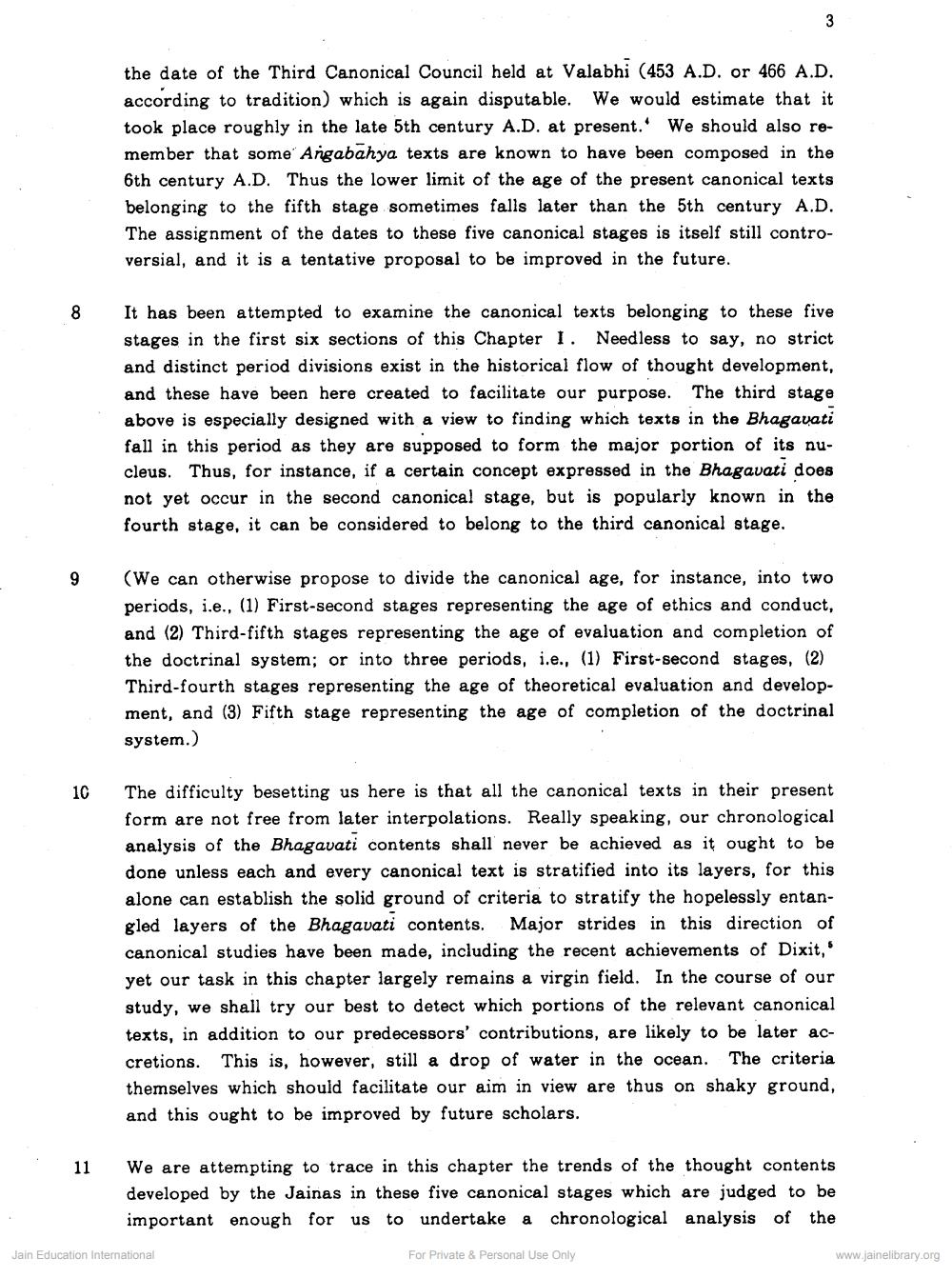________________
3
the date of the Third Canonical Council held at Valabhi (453 A.D. or 466 A.D. according to tradition, which is again disputable. We would estimate that it took place roughly in the late 5th century A.D. at present. We should also remember that some' Angabahya texts are known to have been composed in the 6th century A.D. Thus the lower limit of the age of the present canonical texts belonging to the fifth stage sometimes falls later than the 5th century A.D. The assignment of the dates to these five canonical stages is itself still controversial, and it is a tentative proposal to be improved in the future.
It has been attempted to examine the canonical texts belonging to these five stages in the first six sections of this Chapter 1. Needless to say, no strict and distinct period divisions exist in the historical flow of thought development, and these have been here created to facilitate our purpose. The third stage above is especially designed with a view to finding which texts in the Bhagavati fall in this period as they are supposed to form the major portion of its nucleus. Thus, for instance, if a certain concept expressed in the Bhagavati does not yet occur in the second canonical stage, but is popularly known in the fourth stage, it can be considered to belong to the third canonical stage.
(We can otherwise propose to divide the canonical age, for instance, into two periods, i.e., (1) First-second stages representing the age of ethics and conduct, and (2) Third-fifth stages representing the age of evaluation and completion of the doctrinal system; or into three periods, i.e., (1) First-second stages, (2) Third-fourth stages representing the age of theoretical evaluation and development, and (3) Fifth stage representing the age of completion of the doctrinal system.)
10
The difficulty besetting us here is that all the canonical texts in their present form are not free from later interpolations. Really speaking, our chronological analysis of the Bhagavati contents shall never be achieved as it ought to be done unless each and every canonical text is stratified into its layers, for this alone can establish the solid ground of criteria to stratify the hopelessly entangled layers of the Bhagavati contents. Major strides in this direction of canonical studies have been made, including the recent achievements of Dixit,' yet our task in this chapter largely remains a virgin field. In the course of our study, we shall try our best to detect which portions of the relevant canonical texts, in addition to our predecessors' contributions, are likely to be later accretions. This is, however, still a drop of water in the ocean. The criteria themselves which should facilitate our aim in view are thus on shaky ground, and this ought to be improved by future scholars.
11
We are attempting to trace in this chapter the trends of the thought contents developed by the Jainas in these five canonical stages which are judged to be important enough for us to undertake a chronological analysis of the
Jain Education International
For Private & Personal Use Only
www.jainelibrary.org




